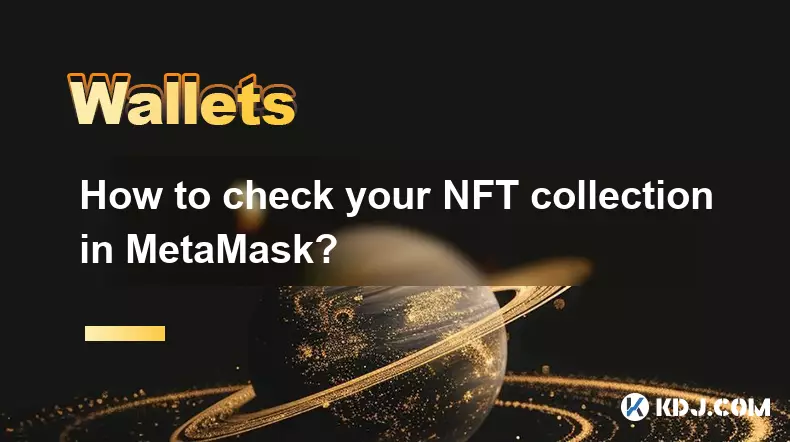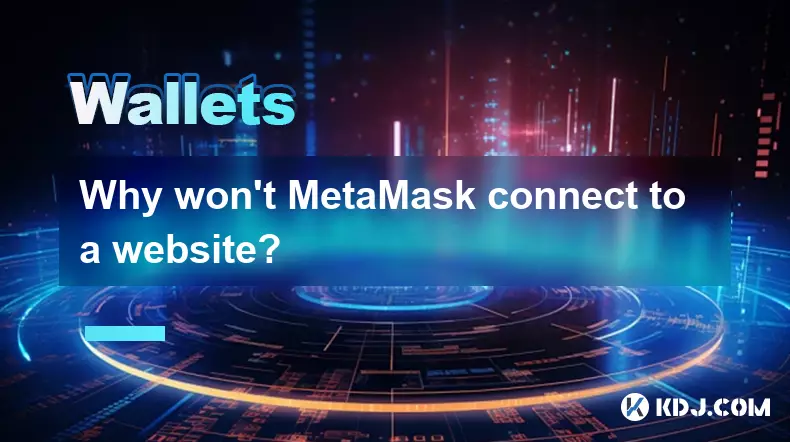-
 bitcoin
bitcoin $100977.009184 USD
-2.05% -
 ethereum
ethereum $3282.009150 USD
-3.23% -
 tether
tether $0.999813 USD
-0.02% -
 xrp
xrp $2.208254 USD
-4.89% -
 bnb
bnb $951.411089 USD
0.55% -
 solana
solana $155.761205 USD
-2.84% -
 usd-coin
usd-coin $1.000217 USD
0.02% -
 tron
tron $0.284475 USD
-1.28% -
 dogecoin
dogecoin $0.162363 USD
-1.53% -
 cardano
cardano $0.533988 USD
-0.47% -
 hyperliquid
hyperliquid $39.174339 USD
-3.22% -
 chainlink
chainlink $14.724828 USD
-1.16% -
 bitcoin-cash
bitcoin-cash $477.297986 USD
-1.28% -
 zcash
zcash $554.227426 USD
17.30% -
 ethena-usde
ethena-usde $0.998995 USD
-0.03%
Why is the MetaMask swap feature failing?
MetaMask swap failures often stem from low gas fees, tight slippage, network congestion, or incorrect settings—ensuring proper configuration can prevent most issues.
Nov 06, 2025 at 09:20 pm

MetaMask, one of the most widely used cryptocurrency wallets, enables users to swap tokens directly within the interface. Despite its convenience, users frequently encounter failed swaps. These failures can stem from multiple sources ranging from network congestion to incorrect settings in the wallet itself.Understanding MetaMask Swap Failures
Common Causes of Swap Failures
1. Insufficient gas fees: Transactions on Ethereum and other EVM-compatible chains require gas to be processed. If the selected gas fee is too low, miners or validators may ignore the transaction, leading to a timeout and eventual failure.
2. Slippage tolerance too tight: When swapping volatile tokens, price changes occur rapidly. If the slippage setting in MetaMask is set below the actual market movement, the transaction will revert to prevent unfavorable execution.
3. Network congestion: High traffic on networks like Ethereum can delay transaction confirmations. Even if a swap is initiated correctly, pending status can persist for long durations before failing.
4. Token not supported or misconfigured: Some tokens are not properly integrated with decentralized exchanges that MetaMask aggregates. This results in failed quote retrieval or execution errors during the swap process.
5. Outdated app or browser extension: Running an old version of MetaMask may lead to compatibility issues with updated smart contracts or routing protocols used by decentralized exchanges.
User Configuration and Wallet Settings
1. Incorrect network selection: Attempting a swap on the wrong blockchain—such as trying to trade a BSC token while connected to Ethereum Mainnet—will result in immediate failure. Users must ensure they are on the correct network before initiating any transaction.
2. Approval issues: ERC-20 tokens often require approval before being swapped. If a user hasn’t granted spending permission to the router contract, the swap will fail at execution.
3. Poor DNS or connectivity: Internet instability can interrupt communication between MetaMask and the node providers, causing transaction payloads to drop or time out.
4. Aggregator routing errors: MetaMask relies on third-party liquidity aggregators like 0x API or Paradex. Temporary outages or bugs in these services can return invalid routes or no quotes at all.
Smart Contract and Liquidity Factors
1. Low liquidity pools: Tokens with minimal presence in decentralized exchanges lack sufficient reserves. Swapping large amounts under such conditions exceeds available depth, triggering a revert.
2. Price impact thresholds: If a swap would significantly move the market price due to size, decentralized exchanges automatically block the transaction unless the user adjusts slippage accordingly.
3. Flash loan vulnerabilities: Some malicious tokens implement logic that exploits arbitrage mechanisms. DEX aggregators may blacklist these tokens, preventing swaps even if they appear legitimate in the wallet.
4. Router contract incompatibility: Newer token standards or custom implementations might not interact properly with standard swap routers, resulting in silent failures or ambiguous error messages.
Frequently Asked Questions
Why does my MetaMask swap show “Transaction Failed” after confirmation?This typically occurs when the transaction was broadcasted but reverted during execution on-chain. Common reasons include insufficient slippage, high price impact, or a temporary unavailability of liquidity.
Can I recover funds if a swap fails?Yes. In failed swaps, the original tokens remain in your wallet. However, gas fees are non-refundable since they pay for computational resources used during the attempt.
How do I adjust slippage in MetaMask before swapping?Navigate to the swap interface, click the three-dot menu, select “Slippage Tolerance,” and choose a higher percentage—common options are 1%, 3%, or up to 12% for highly volatile tokens.
Does MetaMask support swaps on all blockchains?MetaMask supports swaps across multiple EVM-compatible chains including Ethereum, Polygon, Binance Smart Chain, Arbitrum, and Optimism. Availability depends on integration with liquidity sources on each chain.
Disclaimer:info@kdj.com
The information provided is not trading advice. kdj.com does not assume any responsibility for any investments made based on the information provided in this article. Cryptocurrencies are highly volatile and it is highly recommended that you invest with caution after thorough research!
If you believe that the content used on this website infringes your copyright, please contact us immediately (info@kdj.com) and we will delete it promptly.
- Layer 2 Coins: Will There Be a Potential Explosion by 2026?
- 2025-11-07 16:50:02
- Filecoin, ICP, and the AI Infrastructure Renaissance: Is History Repeating?
- 2025-11-07 16:50:02
- Bitcoin's Wild Ride: Surges, Zeros, and the Search for Stability
- 2025-11-07 17:05:01
- Filecoin, DePIN, and a Technical Breakout: What's the Buzz?
- 2025-11-07 17:05:01
- Vande Mataram at 150: Stamps, Coins, and a Year-Long Celebration
- 2025-11-07 14:45:01
- Pi Network: Alignment, Not Just Speed, Is the Future of Crypto
- 2025-11-07 13:00:02
Related knowledge

How to check your NFT collection in MetaMask?
Nov 06,2025 at 08:20pm
Accessing Your NFTs in MetaMask Wallet1. Open the MetaMask browser extension or mobile app and ensure you are logged into your wallet account. Once in...

Why is the MetaMask swap feature failing?
Nov 06,2025 at 09:20pm
Understanding MetaMask Swap FailuresMetaMask, one of the most widely used cryptocurrency wallets, enables users to swap tokens directly within the int...

How to import an account into MetaMask using a private key?
Nov 07,2025 at 07:40am
Importing an Account into MetaMask with a Private KeyMetaMask is one of the most widely used cryptocurrency wallets, particularly within decentralized...

What to do if my MetaMask wallet was compromised?
Nov 06,2025 at 04:59pm
Immediate Steps to Take After a Compromised MetaMask Wallet1. Disconnect your device from any phishing websites immediately. If you clicked on a suspi...

How to reset your MetaMask account if transactions are stuck?
Nov 06,2025 at 05:39pm
Understanding the MetaMask Account Reset Process1. When transactions appear stuck in MetaMask, users often consider resetting their account to resolve...

Why won't MetaMask connect to a website?
Nov 07,2025 at 06:40am
Common Reasons MetaMask Fails to Connect to Websites1. The browser extension is not properly installed or activated. Users may think MetaMask is ready...

How to check your NFT collection in MetaMask?
Nov 06,2025 at 08:20pm
Accessing Your NFTs in MetaMask Wallet1. Open the MetaMask browser extension or mobile app and ensure you are logged into your wallet account. Once in...

Why is the MetaMask swap feature failing?
Nov 06,2025 at 09:20pm
Understanding MetaMask Swap FailuresMetaMask, one of the most widely used cryptocurrency wallets, enables users to swap tokens directly within the int...

How to import an account into MetaMask using a private key?
Nov 07,2025 at 07:40am
Importing an Account into MetaMask with a Private KeyMetaMask is one of the most widely used cryptocurrency wallets, particularly within decentralized...

What to do if my MetaMask wallet was compromised?
Nov 06,2025 at 04:59pm
Immediate Steps to Take After a Compromised MetaMask Wallet1. Disconnect your device from any phishing websites immediately. If you clicked on a suspi...

How to reset your MetaMask account if transactions are stuck?
Nov 06,2025 at 05:39pm
Understanding the MetaMask Account Reset Process1. When transactions appear stuck in MetaMask, users often consider resetting their account to resolve...

Why won't MetaMask connect to a website?
Nov 07,2025 at 06:40am
Common Reasons MetaMask Fails to Connect to Websites1. The browser extension is not properly installed or activated. Users may think MetaMask is ready...
See all articles










































































